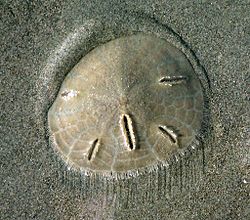| Neognathostomata Temporal range: | |
|---|---|
 | |
| Echinocyamus pusillus | |
| Scientific classification | |
| Kingdom: | Animalia |
| Phylum: | Echinodermata |
| Class: | Echinoidea |
| Subclass: | Euechinoidea |
| Infraclass: | Irregularia |
| Superorder: | Neognathostomata Smith, 1981 |
| Orders | |
The Neognathostomata are a superorder of sea urchins.



